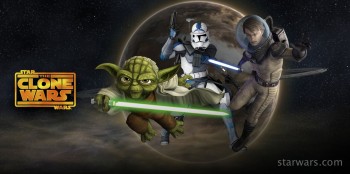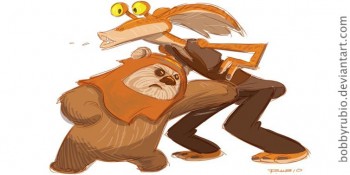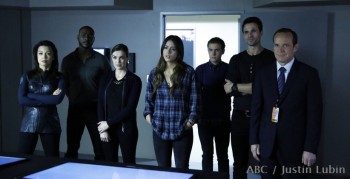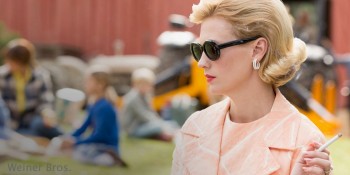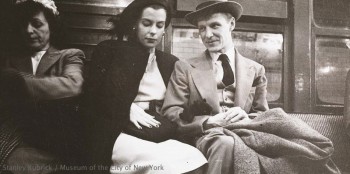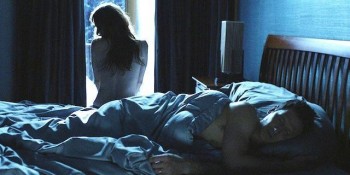Star Wars: The Clone Wars (Cartoon Network)
Where to binge: All six seasons available on Netflix; Season 1 through 5 on Amazon Prime
I went to see Return of the Jedi with my father when it was released in 1983. I owned the original Star Wars trilogy on video cassette. I read Star Wars novels. I owned the Star Wars role-playing game (the one published by West End Games in 1997, not the D20 knockoffs that followed).
The epic, three-part saga about the the rescue of a princess, the return of the last Jedi Knight, the defeat of an Empire, and the destruction of a space station so large it was mistaken for a moon shaped how I looked at stories. I have come back to Star Wars throughout the years, reconnecting with Luke and Leia and Han.
In short, I love Star Wars.
And, as might be obvious from my curriculum vitae above, I dislike the Star Wars prequel trilogy. Most of the fans in my age bracket (i.e. way past 20 years old) were disappointed in the prequels. We felt that George Lucas had traded in heartfelt mythological storytelling for green-screen effects, wooden dialogue, and a confusing, directionless story. Sure, the music was great, and the lightsaber duels were amazing, but Lucas had gone CGI mad, remastering the originals and changing them to paper over continuity lapses between the new films and the old.
And I didn’t like it.
I did, however, like Genndy Tartakovsky, of Samurai Jack and Dexter’s Laboratory fame. He did a tie-in cartoon, called Star Wars: Clone Wars, that covered the years between the second and third movie episodes. It was a fun, exciting, heartfelt romp through epic Star Wars action. The show was hand-drawn, stylistically very similar to Samurai Jack (which I loved) and, hey, it was Star Wars, so that was a plus.
In 2008, LucasFilm Animation built upon the foundation laid by Tartakovsky with their own series, Star Wars: The Clone Wars. I avoided it at the time but kept hearing solid recommendations from people I trusted. When Netflix started to stream the entire run of the show, as well as the previously unaired Lost Missions, it was enough to convince me to watch it.
And, boy, was I glad I did.
The Clone Wars is a computer-animated show that follows Anakin Skywalker and Obi-Wan Kenobi in their roles as Generals of the Grand Army of the Republic during the Clone Wars. It has a large cast of well-developed recurring characters, both old and new. The show splits its focus between military action and political manipulation, as it sets up the long, slow fall of the Republic into the grip of the tyrannical Supreme Chancellor Palpatine and his servant and apprentice, Count Dooku.
The Clone Wars tackles the events that take place between Episodes II and III and fleshes out the Clone Wars, the Clone Troopers who fight for the Republic, and the Separatist forces they fight against. Each season is comprised of several long arcs, and each arc builds cleanly upon the last.
Like all good sci-fi, The Clone Wars lets us look at our own world and its issues in a different light. Though there are a lot of space battles and Jedi duels (and the show doesn’t pull any punches on the violence front: named characters are killed on-screen so often I found myself wondering how they managed to show this on Cartoon Network), the real standout aspect of the show for me was its portrayal of the politics of the Republic. The major plot devices were usually things like negotiating treaties, securing bank loans to purchase more troops, and passing laws to deregulate industries. By taking this tack, the show fills in the sizable plotholes in the prequel films, as well as giving it a topical, relevant feeling.
While there are a great many things that the show does well, the most fascinating thing for me was how it handled the Clone Troopers. Instead of the faceless legions depicted in the films, the Clone Troopers are shown as brave and determined, excellent soldiers who are loyal to their cause and to each other. They are all given distinct personalities, and the viewer comes to admire and respect them. They are used to tell stories about what it means to be human, what it means to fight for what you believe in, and how far you are willing to go for a friend.
Despite all the things The Clone Wars does right, it’s not a perfect show. Like the prequel films, many episodes are bogged down by stilted storytelling and hampered by the writers assuming the audience knows things they might not know. There are a few throwaway episodes that were either too weird or too silly to feel like they belonged among the rest. It takes about one full season to really pick up steam, and I don’t think it found its voice until season 3. But once it finds that voice, it is often brilliant. And when it is brilliant, I was very willing to forgive its failings because of how strongly the writer’s love of the franchise shines through the material.
There are six seasons, for a total of well over 100 episodes, so the show covers far more ground than I can hope to address in one review. It is ambitious in its scope, though it sometimes falls victim to that ambition.
But The Clone Wars does something that I didn’t think it could do. It made Star Wars awesome again, and not just the old Star Wars I knew and loved as a boy. It fleshed out the narrative framework of the prequel films in exciting and challenging ways. It brought mysticism back to the Force and heroism back to the Jedi. It makes you fall in love with the Star Wars world and the characters again, and as a fan, thats the strongest praise I can bestow on anything.
Watch it while it’s still streaming on Netflix. It might just make you a fan again, too.
